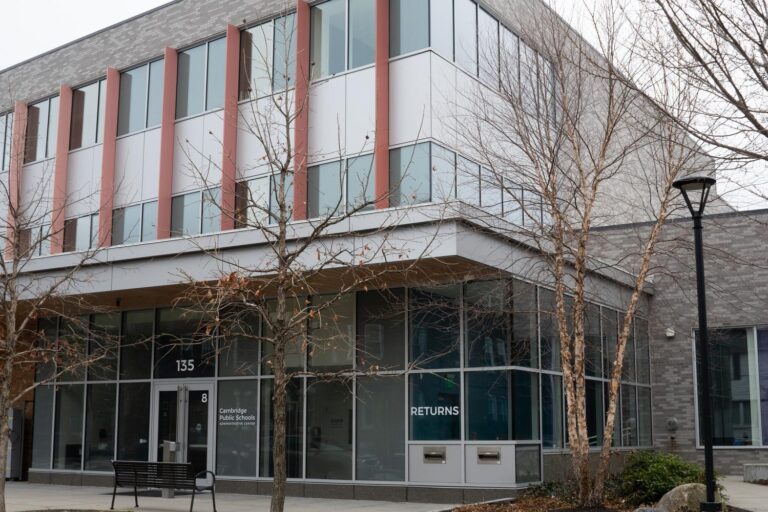Chicago Public Schools’ Plan to Restructure Administrative Boundaries Raises Equity and Governance Concerns
Community Voices Question CPS’s Proposal to Align Administrative Offices with School Board Districts
Chicago Public Schools (CPS) has introduced a plan to reorganize its administrative office boundaries so they correspond directly with the city’s elected school board districts. Proponents within CPS argue this realignment will foster more localized decision-making and improve accountability to communities.However, this initiative has met with immediate skepticism from parents, educators, and advocacy groups who fear it may deepen existing disparities and invite political favoritism in resource distribution.
Among the primary concerns voiced by stakeholders are:
- Insufficient public engagement: Many community members call for broader consultation before any structural changes are finalized.
- Risk of politicization: Aligning administrative offices with electoral districts could lead to biased allocation of funds and services.
- Operational interruptions: Implementing such changes mid-academic year might disrupt essential school functions and services.
As CPS refines its proposal, these apprehensions underscore the challenge of balancing administrative efficiency with equitable service delivery across Chicago’s diverse neighborhoods.
| Issue | Possible Consequence |
|---|---|
| Clarity | Reduced community involvement in decision-making |
| Political Influence | Unequal distribution of resources |
| Operational Disruption | Delays in school administrative services |
Governance Implications: How Realignment Could Affect CPS Oversight and Board Roles
Restructuring CPS’s administrative offices to align with elected school board districts could considerably alter the district’s governance dynamics. This shift risks increasing fragmentation within the system, possibly complicating the consistent enforcement of district-wide policies and weakening centralized oversight. Experts warn that decentralizing administrative control might result in uneven educational standards and resource disparities between districts.
Additionally, this realignment raises questions about the evolving role of school board members.Critics caution that:
- Governance and administration roles may become blurred, making it tough to distinguish policy-making from operational management.
- Oversight responsibilities could become fragmented, as accountability disperses across district-specific administrators rather than remaining centralized.
- Political considerations might increasingly influence administrative decisions, as board members gain more direct control over day-to-day operations.
| Potential Advantages | Potential Drawbacks |
|---|---|
| Better alignment with local community needs | Fragmented and inconsistent decision-making |
| Improved responsiveness to district-specific concerns | Uneven enforcement of policies across districts |
| Greater engagement from school board members | Confusion over governance versus administrative roles |
Equity and Representation at Risk: Expert Analysis on District Boundary Changes
Civic leaders and education experts have expressed serious reservations about CPS’s plan to redraw administrative boundaries to match elected school board districts. They warn that this approach could unintentionally marginalize vulnerable communities by weakening their influence in decision-making and diverting resources away from areas with the greatest need.
Key risks identified include:
- Unequal funding distribution: Budgets and support services may shift away from historically underserved neighborhoods.
- Misrepresentation: New district lines might fail to reflect the city’s diverse student demographics accurately.
- Erosion of community trust: Lack of transparency and insufficient stakeholder involvement could alienate families and local advocates.
Recent demographic and socioeconomic analyses suggest that districts on Chicago’s South and West Sides could face amplified disparities if the plan proceeds without protective measures.The table below highlights concerns raised by community organizations monitoring the proposal:
| Area of Concern | Possible Effect | Most Impacted Communities |
|---|---|---|
| Resource Allocation | Reduced funding for specialized educational programs | South and West Side neighborhoods |
| Community Participation | Lower engagement in policy development | Minority and immigrant families |
| Board Representation | Weakened advocacy for at-risk students | Low-income households |
Strategies for Transparent Governance and Inclusive Community Engagement
To rebuild trust and ensure fairness in the face of controversy, it is critical that CPS commits to transparent and inclusive decision-making processes. This includes openly sharing extensive data and the rationale behind proposed changes well in advance of implementation. Providing accessible platforms for input-from parents, educators, and community leaders alike-is essential to guarantee diverse perspectives are incorporated.
Effective engagement should extend beyond token consultation by adopting a multi-faceted approach such as:
- Focused outreach to marginalized and underrepresented groups to capture a broad range of voices.
- Partnerships with local nonprofits and advocacy organizations to bridge dialog gaps between CPS and communities.
- Regular updates and opportunities for feedback at every stage of the decision-making process.
Embedding these practices will not only address concerns but also foster accountability and shared obligation for the district’s future.
Conclusion: Navigating the Path Forward for CPS Governance Reform
As Chicago Public Schools advances its proposal to realign administrative offices with elected school board districts, the debate over its potential effects on governance, equity, and resource distribution intensifies. While the plan aims to enhance local accountability, critics caution it may undermine centralized oversight and exacerbate political tensions. Moving forward, CPS and city leaders must prioritize transparency, equitable resource allocation, and meaningful community involvement to ensure that any restructuring strengthens rather than fragments Chicago’s educational system.





